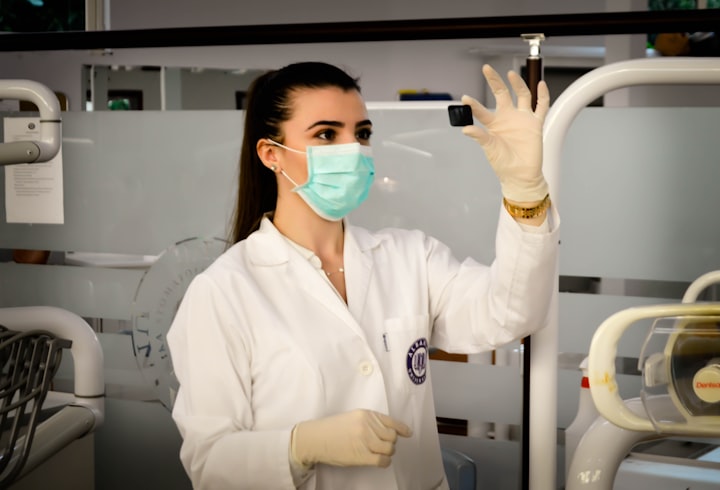Long COVID: An explainer and research roundup
Researchers are working to better understand the physical and mental health problems some people can experience long after first getting infected with COVID-19. We’ve summarized what’s known so far about the collection of symptoms known as long COVID.

As the COVID-19 pandemic enters its third year, researchers are learning more about the long-term effects of the infection and about a collection of symptoms and complications commonly called long COVID.
Shortness of breath, fatigue and “brain fog” are among the most common symptoms of long COVID. For some, these symptoms persist after getting infected with coronavirus. For others, new complications arise weeks or months later.
There are many unanswered questions, like how common long COVID is, who is more likely to get it and why. And there’s still no consensus in the medical community over the definition, diagnosis and treatment of long COVID.
“I think we’re still scratching the surface,” says Dr. Amesh Adalja, a senior scholar at the Johns Hopkins University Center for Health Security, whose research focuses on emerging infectious disease, pandemic preparedness and biosecurity.
Below we have addressed some of the key questions about long COVID and summarized several studies that journalists can use to bolster their reporting. Keep in mind that knowledge and research in this field is rapidly evolving, and we will update this piece periodically as new analyses comes to light.
What is long COVID?
There’s no universal definition for long COVID.
The CDC says long COVID is a wide range of new, returning or ongoing physical and mental health problems people can experience four or more weeks after first getting infected with SARS-CoV-2, the virus that causes COVID-19.
People with long COVID commonly have a combination of symptoms, including shortness of breath, fatigue, difficulty concentrating or thinking (“brain fog”), headache, sleep problems, dizziness, rash and joint or muscle pain, among others. Some people who develop a severe COVID-19 infection can also develop autoimmune conditions. Others may experience complications that affect their heart, lungs, kidneys or skin.
The World Health Organization has a wider window for symptoms that can be considered long COVID. Instead of the CDC’s four weeks, it says long COVID occurs “usually 3 months from the onset of COVID-19 with symptoms … that last for at least 2 months and cannot be explained by an alternative diagnosis.” These symptoms may have persisted since the initial illness, gone away and reappeared, or be new.
As of July 2021, long COVID can be considered a disability under the Americans with Disabilities Act, according to the U.S. Department of Health and Human Services.
Is “long COVID” the correct term?
The Centers for Disease Control and Prevention uses the umbrella term “post-COVID conditions.” It also lists other terms used for the condition, including long COVID, long-haul COVID, post-acute COVID-19, long-term COVID, chronic COVID, post-acute COVID syndrome.
Scientists use the umbrella term post-acute sequalae of SARS-CoV-2 infection, or PASC. Long COVID falls under this umbrella; so does multisystem inflammatory syndrome in children (MIS-C) and adults (MIS-A), which is a rare but severe immune response to COVID-19 infection.
The World Health Organization says, “Post COVID-19 condition, also known as ‘long COVID,’ refers collectively to the constellation of long-term symptoms that some people experience after they have had COVID-19. People who experience post COVID-19 condition sometimes refer to themselves as ‘long-haulers.’”
The Associated Press Stylebook recommends either “long-haul COVID-19” or “long COVID-19.” “We don’t use the medical term,” the stylebook says, referring to PASC. The New York Times uses “long Covid.”
What’s the difference between long COVID and Post-ICU Syndrome?
Patients who spend time in the ICU can develop post-intensive care syndrome, or PICS, which can include severe weakness, problems with thinking and judgement and post-traumatic stress disorder (PTSD), according to the CDC. PICS is a well-established medical diagnosis that existed long before COVID-19.
“It’s really important to separate long COVID from conditions such as post ICU syndrome, because anybody that’s admitted to the intensive care unit on a ventilator is not going to recover [quickly],” says Adalja.
Part of the current research is focused on distinguishing conditions that are only the result of COVID-19 infection from those that result from hospitalization and other treatments for severe illness from the infection.
“Some symptoms that can occur after hospitalization are similar to some of the symptoms that people with initially mild or no symptoms may experience many weeks after COVID-19,” according to the CDC. “It can be difficult to know whether they are caused by the effects of hospitalization, the long-term effects of the virus, or a combination of both.”
Who gets long COVID?
Long COVID can occur in people who get severely sick, have a mild illness or don’t have symptoms.
“Whereas older patients and those with underlying health conditions might have an increased risk for severe disease, young people, including those who were physically fit before SARS-CoV-2 infection, have also reported symptoms lasting several months after acute illness,” according to the CDC.
In September 2021, the National Institutes of Health announced the establishment of national study to “understand how people recover from COVID-19 and why some people do not fully recover after the viral infection seems to have cleared.” The study is called Researching COVID to Enhance Recovery Initiative, or the RECOVER Initiative. The project, which will include several universities and hospitals, is still in its initial phases and hasn’t enrolled patients yet.
How common is long COVID?
We don’t know yet, mainly because there’s a lack of long-term studies. Estimates of long COVID vary widely in the current literature, ranging from 5% to 80%, according to the CDC.
According to the World Health Organization, about 10% to 20% of people who get COVID-19 experience “mid- and long-term effects” after they recover from the initial illness.
According to the U.K.’s Office for National Statistics, an estimated 1.3 million people, or 2.1% of the population, self-reported long COVID. The estimate is based on a survey of 305,997 people over a four-week period ending on Jan. 2, 2022.
WHO has developed medical codes for long COVID, which can help with documentation and surveillance of the condition around the world.
Long COVID can also occur in children, but it appears to be less common than in adults. It has also been more commonly reported in women, but researchers don’t know why.
How is long COVID diagnosed?
Diagnosing long COVID isn’t simple. No laboratory test can definitively distinguish long COVID at this time. In its guidance to clinicians, the CDC recommends a list of tests for evaluating people for long COVID.
Some patients who develop long COVID may have never had a positive test for the infection or may have received a negative test because of waning antibody levels or false-negative results, the CDC explains.
Adalja says he first rules out post-ICU syndrome and other preexisting medical conditions that may have gone undiagnosed. He then looks to see if the patients’ lingering symptoms interfere with their daily activities. An example is someone who used to be able to go up the stairs but now gets winded after a few steps. He added that he doesn’t consider chronic cough to be a symptom of long COVID, because it occurs after many viral infections and can last weeks.
“And then you’re left in the end with a diagnosis of exclusion: No, they weren’t in the ICU. Yes, this [limits daily] activities. And no, this is not something that that’s caused by another illness that that could be present. And then you kind of back into the diagnosis of long COVID,” Adalja says.
The CDC notes that doctors shouldn’t solely rely on lab or imaging results to assess patients.
“Lack of laboratory or imaging abnormalities does not invalidate the existence, severity, or importance of a patient’s symptoms or conditions,” the agency says.
How is it treated?
There’s no single treatment or drug for long COVID, because it’s not just one illness. Many post-COVID conditions can improve through already-established approaches that manage symptoms, according to the CDC. For instance, breathing exercises can improve shortness of breath.
Across the U.S., hospitals and medical centers are establishing clinics for patients who have long COVID, bringing together different specialties to address the patients’ needs. At least 66 hospitals and health systems have post-COVID-19 clinics, according to Becker’s Hospital Review.
Many post-COVID conditions can also be managed by primary care providers, according to the CDC.
“It’s not going to be, in the end, something that is going to be amenable to ‘take this pill and your long COVID goes away,’” says Adalja. “And I think until we understand what’s going on in those patients, it’s more going to be like precision medicine than one size fits all.”
How can long COVID be prevented?
Do your best to not get COVID, says Adalja.
Research also suggests that vaccinated people are less likely to develop long COVID.
A briefing by the U.K. Health Security Agency, published on February 2022, examines 15 studies that reported on the effectiveness of vaccines against long COVID. It finds that people who are fully vaccinated against COVID-19 have a lower risk of developing long COVID compared with those people who are partially vaccinated or unvaccinated.
How does it compare with other infectious diseases?
COVID-19 is not the first infectious disease to have lingering effects.
After the 1918 flu, some people had long-haul flu symptoms called Von Economo Encephalitis, which the late, renowned physician and author Dr. Oliver Sacks later wrote about in his book “Awakenings,” turned into a namesake movie, says Adalja.
Other diseases that can have lingering effects include mononucleosis, or mono, and Lyme disease.
Who are the best sources for news stories about long COVID?
A range of medical specialties are involved in the care of patients who have long COVID, including infectious disease, critical care, cardiology, neurology, psychiatry, rheumatology, nephrology, pulmonology and physical medicine and rehabilitation.
Journalists Betsy Ladyzhets and Fiona Lowenstein have created a list of long COVID experts and advocates as a resource for other journalists.
This work is licensed under a Creative Commons Attribution-NoDerivatives 4.0 International License.
About the Creator
Viona Aminda
Not a fiction story telling






Comments
There are no comments for this story
Be the first to respond and start the conversation.